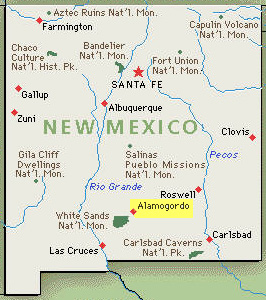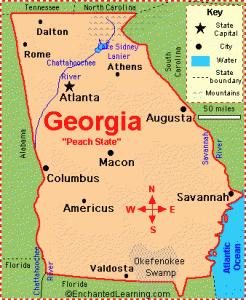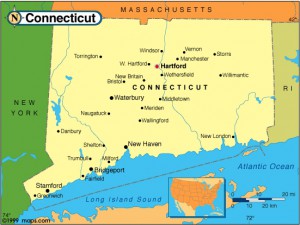
The Internal Revenue Service (IRS) has begun its efforts to collect on Affordable Care Act (ACA) penalties by issuing Letter 226J to non-compliant businesses. There’s a chance you may have already received one of these letters.
With only 30 days to dispute the letter, having an action plan in place and ready to go is critical in order to protect your organization from costly penalties that could soar into millions of dollars.
Presented by Equifax, the market leader in ACA management, this on-demand webinar reveals best practices for responding to Letter 226J as well as when and how to submit a dispute. You’ll also gain a better understanding of why you received Letter 226J and how the IRS assessment was calculated.
Ensure your nonprofit is equipped with a plan should IRS Letter 226J arrive in your mailbox and watch the on-demand recording today!
This webinar series is part of UST’s efforts to educate the nonprofit sector. For more learning opportunities, tips and legal updates just for nonprofits, sign up for our monthly e-News today!


Like many states desperately trying to save their funds from insolvency, legislators in New Mexico passed a bill last year that would have slashed unemployment benefits and hiked the premiums businesses still in the tax-rated state system would have to pay. Martinez, however, eliminated the higher premiums and signed a new bill this year that approved lower rates through 2013.
Senator Gerald Ortiz y Pino (D- Albuquerque) is warning, though, that the state will soon have to borrow from the federal government at a high interest rate because employers only paid $197.8 million into the fund last year. And with more than 40,000 employers drawing from the fund, the remaining $60 million won’t go far.
For nonprofit agencies still in the state system, there are other options, such as leaving the state to join a Trust, like the Unemployment Services Trust (UST), that can help save more money and gain greater predictive control over yearly budgeting.
In fact, New Mexico nonprofits that leave the state system and join UST save an average of $3,483 a year.
To learn more about your opt out alternatives, visit https://www.chooseust.org/501c3-unemployment-alternatives/ or sign up for the an upcoming Exclusive Nonprofit Savings webinar.
Read the full Albuquerque Journal article here.

You’ve already tightened your belt. But now constrained public funding and highly competitive government grants are making sustainability harder than ever for nonprofits, especially those in the human services sector. We think this recent article from the Stanford Social Innovation Review is a great read for nonprofits suffering from funding cutbacks. The article provides guidelines on how to stay afloat during these times, including these five ideas:
1) The importance of strategic clarity and the steps your organization should take to focus on priorities
Nonprofits across the globe offer a wide variety of services. Defining how, where and with whom you have an impact will assist you in finding your niche, and also help you with your funding efforts. From here, nonprofits should define how much it costs to provide each service offered by the organization so you can seek the proper funding needed to keep the program afloat. This allows the agency to locate areas of service that may be altered if funds are lacking and show what areas of the service would benefit the most if funding were increased. Also, focusing on strategic clarity aids the organization in decision making and how you can pursue opportunities for government funding.
2) Diversifying government support streams and how to manage a strapped funding environment
Organizational sustainability is of the utmost importance, so it is imperative that organizations not have all of their funds coming from just one source. Allowing funds to funnel in through multiple sources (government agencies, state programs, donors) can help your organization remain stable amid declining revenues. Nonprofits may consider offering services in different locations or offering their services to others who may benefit from them (for example, offering services for children with behavioral disorders in a school setting, to children with behavioral disorders in foster homes). Organizations can also take contracts that may not cover all of the costs involved with a particular service if there is potential for making up the difference in community support.
3) Improving productivity, efficiency and effectiveness
A notable difference between the for-profit and nonprofit market place is that nonprofit organizations rarely get to name their price when trying to earn a contract. And, since the funds provided don’t always cover the costs required to carryout the work needed, nonprofits find themselves trying to work more efficiently and effectively in order to preserve funds for the future. Many organizations are becoming more tech-savvy and investing in technologies that streamline job processes and free up valuable man hours so they can focus more on “big picture” tasks.
4) Measuring outcomes and utilizing reports to drive internal learning
Many times, nonprofit organizations generate reports to show the results of their efforts to external parties in order to prove they are satisfying funder requirements, government expectations, etc. Measuring outcomes can be a valuable tool in educating internal associates of program productivity and how certain aspects of those programs can be tweaked in order to improve results. Measuring outcomes can also show whether or not a certain program is producing its intended results, ultimately aiding in overall organizational sustainability.
5) Moving beyond “vendorism” and viewing government decision makers as customers
When nonprofit organizations work with government decision makers, keeping in mind that the government is the buyer and the nonprofit is the seller, nonprofits can better position themselves to mold the government’s request for proposals. As Patrick Lawler, CEO of Youth Villages, stated, “We find out where the leadership’s biggest needs and challenges are, and then look at what services we have that can help them solve the problem. We look over every word in new state budgets and the statements made by the governor or head of child welfare services, and put together a plan for how to address the needs identified.”


For you, answering these questions is critical to creating an invested workforce that sparks the creativity and drive that your mission thrives on. Answering the questions also gives employees a sense of who they are and where they fit in your agency, which leads to more productive, and innovative, workdays.
Answering these questions is only part of a strong employee retention policy though. What other steps do you take to keep employees engaged and excited about your nonprofit?

– Interview Available-
Santa Barbara, CA (April 18, 2013) – In an effort to reduce potential penalties for its nonprofit employer members, the Unemployment Services Trust (UST) has launched several new efforts and technological tools to help address what is being called the federal “UI Integrity mandate.”
Passed as a part of the Trade Adjustment Assistance Extension Act of 2011, the Unemployment Insurance (UI) Integrity mandate requires all employers to provide a complete and timely response to the state’s first request for information about an unemployment claim. Designed to address one of the biggest weaknesses of Unemployment Insurance (UI) funds nationwide—the persistence of unemployment benefits paid in error, which are have cost $10.3 billion in the last year—the UI Integrity Act requires full compliance from all states no later than October 21, 2013. As of today, 5 states (NE, OK, MS, IL, and WV) have enacted legislation with 6 additional states (CA, UT, NM, SD, MN, and NC) passing legislation to be enacted in the coming months. 12 states (WA, OR, ID, MT, WY, CO, AZ, ND, IA, LA, KY, and VA) have pending legislation. The remaining states have yet to take any action to meet the federal deadline.
To ensure that the reform yields the necessary savings, there will be penalties on employers for non-compliance. Any employer that fails to provide a complete and timely response to a claim loses any hope of relief from charges attributable to that claim—even if the employer ultimately wins the claim.
Further, if the state identifies a pattern of failure to provide complete and timely responses, negligent organizations and their claims administrator are at risk of permanently losing valuable protest rights and/or facing monetary penalties.
To address these new liabilities, the Unemployment Services Trust (UST), which helps more than 2,000 nonprofit employers nationwide to reduce the cost of unemployment claims, is conducting regional seminars and state-specific webinars for its members. Through its partnership with Equifax Workforce Solutions (WS), UST’s educational opportunities will allow its nonprofit members to examine how changes to the national UI integrity laws will affect them and to gather helpful tips to improve overall win ratios when protesting improper claims. On average, this type of diligence reduces an employer’s claims costs by 15% each year.
In addition to the seminars and webinars, UST’s nonprofit members now have access to a unique unemployment claim dashboard called CaseBuilder, which was launched by WS earlier this year. “This online dashboard will allow organizations to gather and submit documents and details in a fast, secure environment for all stages of the unemployment process,” reports Workforce Solutions. Current members who utilize CaseBuilder have significantly increased their ability to comply with state requests in a timely manner—which will be extremely pertinent as states begin to integrate UI Integrity legislation into their practices.
Finally, members of UST are already reaping the benefits of “SIDES,” the State Information Data Exchange System that 24 states have implemented, with more scheduled throughout 2013. SIDES is a secure, paperless system which allows UST members and their claims administrator WS to better provide necessary details and documentation at the time of an initial claim filing. Here is how it is helping UST member organizations:
“All employers will be on the hook to respond to every unemployment claim, every time,” says Donna Groh, Executive Director of UST. “We’re trying to establish best practices that ensure our member nonprofits are ahead of the curve—so they can avoid penalties down the road.”
About UST: Founded by nonprofits, for nonprofits, UST is the largest unemployment trust in the nation, providing 501(c)(3) organizations with a safe, cost-effective alternative to paying state unemployment taxes. Equifax Workforce Solutions (WS) is UST’s partner to provide members with claim administration, audits of state charges, and hearing representation if a member’s claims protest goes to court. They also provide educational seminars and training materials to UST member agencies throughout the year. Visit www.ChooseUST.org to learn more.

For nonprofits, this isn’t the worst of the news.
After falling below 9 percent in April for the first time in more than 3 years, the rate has begun a steady climb upward again, negatively affecting nonprofit employers throughout Georgia by simultaneously increasing cost and need. Compounded by the state’s depleted unemployment insurance trust fund and an outstanding loan balance of more than $742 million that is still owed to the federal government, nonprofits are facing a higher possibility increased unemployment taxes in 2013.
Because Georgia quickly depleted its unemployment insurance (UI) trust fund, the struggle to provide benefits has hurt employers and jobless workers as the state has made large cuts to benefits and steeply increased the overall unemployment costs paid by employers.
Further adding to the coming financial strain, the interest on the federal unemployment trust fund loan cannot be paid from the unemployment tax fund and must instead be paid from other state revenues, causing further financial stress for legislators.
To pay it, the Georgia legislature passed SB 347 earlier this year, which, in addition to cutting jobless benefits and increasing unemployment benefits paid out by employers, includes provisions to:
While this legislation makes Georgia one of 11 states that have cut jobless benefits in the past year by reducing the duration and level of payouts and by restricting eligibility, the legislation may ultimately harm nonprofits specifically as it forces unemployed workers to turn to nonprofits for aid, while also increasing the amount that agencies must set aside to pay for unemployment costs of their own.
For nonprofit organizations still in the state tax system, there are other options available though. Since 1972 nonprofit employers have had the exclusive ability to opt out of the state system and reimburse directly the dollar-for-dollar costs of only their own unemployment costs.
By safely leaving the state’s pooled liability system and paying only for their own unemployment costs, many nonprofits- particularly those with 10 or more employees- can save up to 50 percent off of their UI taxes and gain greater predictive control over yearly budgeting. In fact, Georgia nonprofits that leave the state system and join UST save an average of $14,321 a year.
Learn more about your nonprofits money saving alternatives, or sign up for an upcoming webinar to learn how UST can help your nonprofit reduce SUI costs.

The system is far from perfect though.
For instance, the system is intrinsically flawed for many nonprofit employers who face little to no job-turnover and who remain a part of their state system. Featured in a recent report, the North Carolina UI system has provided one of the strongest examples of why eligible 501(c)(3)’s should consider opting out of their state UI system, as allowed by federal law.
After borrowing more than $2.4 billion from the federal government to meet their UI responsibilities after their UI Trust Fund became insolvent during the Great Recession, North Carolina has begun leveraging their high interest payments on state UI participants.
Like many states which were unable to meet their UI obligations, the burden of reimbursing the federal government for the full loans falls on all employers within the state, whether or not any of their former employees are currently collecting unemployment benefits.
No state reached insolvency overnight though.
Long before the recent recession, states resisted “indexing” or raising their unemployment taxes from year to year. Things were good, the economy was stable — why should they make adjustments? But while employers enjoyed low taxes, in the long run they were being set up for a much bigger fall in the future. And that’s when the Great Recession hit. Not only had states failed to maintain an adequate UI cushion, employers would be double-hit by the recession in having to lay off workers to cut costs, and then pay higher unemployment taxes as a result. According to a 2010 Government Accountability Office report, “Long-standing UI tax policies and practices in many states over 3 decades have eroded trust fund reserves, leaving states in a weak position prior to the recent recession.” Not that states weren’t warned. Even in North Carolina, the Budget and Tax Center reports that it “conducted a thorough analysis of the unemployment insurance system in March 2007, before the start of the Great Recession, warning of the long-term unsustainability of the system as implemented and suggesting reforms.”
More than ever, systems today must be built that can better weather economic downturns and large, prolonged layoffs. Adequate funding levels must be re-attained so that states rely less on the federal government for funding support to meet benefit payments. A system must also be built which maintains its ability to support the economy with wage-replacement levels that are adequate in supporting workers seeking work.
While innovative programs must continue to be introduced to help place jobseekers in new positions, an overhaul of many state UI systems would better support nonprofit employers who remain in their state tax-rated UI system whether they are too small to opt out, or if they feel safer in the state system.
However, because 501(c)(3)s have the exclusive right to opt out of their state UI system in favor of becoming a reimbursing employer that pays directly for former employees’ UI costs, many already experience a greater savings because they aren’t paying for the state’s interest on federal loans, or subsidizing larger employers’ UI costs.
UST releases a new eBook, focused on helping nonprofit organizations create a workforce to stand apart in a competitive job market.
Founded by nonprofits for nonprofits, UST publishes an eBook that reveals the latest best practices that can help nonprofits find and retain employees that fit their organization’s culture, mission and values. This resourceful eBook provides ideal strategies nonprofits can utilize when tackling a competitive market and juggling the many organizational challenges that comes with maintaining a dynamic workforce.
The eBook, “Competitive Hiring Practices That Empower Nonprofits,” reveals that “56 percent believe their current job is only a temporary stepping stone to something better.” However, with the right tools in place nonprofits will be able to offer their employee’s professional development while creating a nurturing base where talented people can grow, feel challenged and valued.
“Hiring the best-fit personnel can be demanding of your time, energy and resources”, explains Donna Groh, Executive Director of UST. “This eBook offers the critical tools organizations need to draw in and maintain best-fit professionals that can help carry out mission-driven initiatives.”
With recent survey data and nonprofit employment trends, UST is able to provide nonprofits with six proven strategies to develop and maintain a thriving workforce.
The eBook, now available for free download, also offers:
Be sure to download your complimentary copy today!

Recent reports show that despite shrinking budgets, and extensive staffing challenges across the board, nonprofits are still finding value in growing their social networks. According to one blogger, recent studies have found that:
Statistics compiled by Katya’s Non-profit Marketing Blog
But still, social media presents some distinctive challenges for nonprofit organizations.
Because social media provides captive audiences with thousands of attention-grabbing options, nonprofits have to find quick, easy ways to distribute their information and to keep fans engaged. Using interesting infographics goes a long way to keeping your audience aware and involved with a nonprofit mission though.
Innovative and easy to digest, infographics combine key
facts, compelling stories, and interesting imagery that work to start conversations both online and off. “Good visualizations can also help charities better understand their own data and use those insights to improve their programs,” said Jake Porway, founder of Data without Borders, in an article published by The Chronicle of Philanthropy.
By sharing simple messages that can be understood with little or no prior knowledge of the subject matter, nonprofits are finding that they can easily improve their operations and increase their reach.
For more examples of well received infographics and tips on how to make your own, read the full article on The Chronicle of Philanthropy.

Using a business model has grown to become an essential tool when making any business or financial decisions within the nonprofit sector. When incorporating a new business model, a few key components should be discussed to ensure the business model will not only provide financial stability but also further the growth of operations within your organization. Along with understanding the financial side of a new business model, it is important to factor in the daily tasks that occur in a business, including cash flow—money being transferred in and out of an organization.
Cash flow can be simply defined as a movement of money within the organization’s accounts. It is where the numbers and financial reports show how the money has moved and how it’s been accounted for. When managing cash flow, the question you will be asked repeatedly is “When?” —when do you pay your staff, when will you be receiving a grant payment or when is a particular bill due. And while all nonprofit business models are different in one way or another, they all rely on the “when” with the movement of money.
When creating a nonprofit business model, there are two main components to factor in—what kinds of programs and services does your nonprofit offer to the community and most importantly, how are they funded. Each of these components require the understanding of organizational cash flow in order to have effective financial planning. To further understand what kinds of programs and services a particular organization offers, you would look at where and how money is being spent.
When looking at how an organization is funded, this can provide a better understanding of what’s to come in terms of cash coming into the business. If by chance the cash flow doesn’t quite match up with the services offered, this could be further explained by how the organization receives its funding. Each type of income varies based on certain implications and challenges for cash flow, so if a business model is built primarily around one type of funding, this will have to be factored into the structure of the business model.
Creating a smart and strategic business model requires you to be informed and collaborative in cash flow management. This will ensure that your nonprofit’s long-term strategy isn’t hindered by obstacles that could have been avoided.

For Connecticut, and its pool of steadily increasing jobless workers, it took just over two years.
And now, three years after reaching insolvency, the price of the state’s debt is being leveraged on all employers remaining in the tax rated state system.
Although the principal balance of the $632 million loan isn’t yet due, employers are already being called on to cover the interest payments for the debt. For nonprofits remaining within the state UI system, their organization can expect to add approximately $1.70 per thousand dollars of taxable payroll, or about $25.50 per full time employee to their 2012 UI taxes.
As required by law, all employers within the state tax system will be billed directly for this assessment on or about August 1, which must be paid by August 31. Paid outside of the normal state UI system, this additional fee will add on to the gross overpayment of more than $162 million made by Connecticut in the past three years.
For nonprofits still in the state system, there are other options, such as leaving the state to join a Trust, like the Unemployment Services Trust (UST), that can help save more money and gain greater predictive control over yearly budgeting.
By reimbursing the state dollar-for-dollar the claims of only their own former employees, nonprofits that join UST are able to stop overpaying in the state tax system and do more with their money. In fact, Connecticut nonprofits with 10 or more employees can expect to save an average of $10,484 a year after joining UST.

If your organization is considering having an audit for the first time or changing auditors, it is wise to exercise due diligence when obtaining bids for services. With the continued focus on transparency and accountability by government agencies, donors, parent organizations and the general public, the selection of a qualified certified public accountant (CPA) has become increasingly important.
Quality audit and accounting services help nonprofit organizations safeguard their assets; improve internal controls and efficiency; complete timely and accurate returns to comply with federal and state regulatory filing requirements; and stay on top of regulatory requirements, accounting standards and industry best practices.
Before you request bids, your organization needs to answer a few key questions:
Gone are the days of calling a couple of CPAs to say, “Give me a bid,” and reaching an agreement with a handshake. Today’s organizations need to be conscientious about their selection of a CPA. Conducting a diligent and thorough selection process not only satisfies key stakeholders, but ultimately helps protect the organization.
Barry Omahen, CPA, is the Managing Partner of Lindquist LLP, a certified public accounting firm specializing in audits of not-for-profit organizations and their related employee benefit plans. Barry’s chief responsibilities include supervising Lindquist LLP’s day-to-day operations and the firm’s quality control review process. Email Barry at bomahen@lindquistcpa.com.
Stephanie Kretschmer, Marketing Manager, helps the professionals in Lindquist LLP’s four West Coast offices attract and retain clients. She oversees firm communications and has responded to hundreds of requests for proposal in her career. Email Stephanie at skretschmer@lindquistcpa.com.
To learn more from Lindquist’s nonprofit-focused CPAs, watch the recorded webinar: “Beyond the Numbers- How to Review your Organization’s Form 990.”

Already Offering Multiple Nonprofit-Exclusive Programs, Designed to Streamline Operations and Reduce Overhead Costs, UST Launches Unemployment Insurance Program to Further Safeguard Nonprofits.
Santa Barbara, CA (October 19, 2017) – The Unemployment Services Trust (UST), a program dedicated to helping nonprofits ensure compliance and protect assets, today announced it is rolling out a fully insured program, called UST Secure, which will provide full coverage for all claims within the year as well as access to claims management tools, certified HR guidance and award-winning outplacement services.
Already working with more than 2,200 nonprofit participants from across the nation, UST aims to provide nonprofit organizations with workforce solutions that reduce costs and strengthen their missions. Having received frequent requests for an insurance option over the last few years, UST is partnering with Ohio Indemnity Company to deliver an insurance solution specifically for 501(c)(3) employers.
“We are honored and excited to work with UST,” said Ron Lucki, Vice President of Business Development at Ohio Indemnity Company. “As one of the nation’s leading specialty insurance carriers for nonprofits and financial institutions, we look forward to growing with UST and offering insurance options that will enable UST to serve their clients with insurance protection and peace of mind.”
“UST Secure is another way we can provide financial relief and an invaluable sense of security to the nonprofit community.” Donna Groh, Executive Director, UST
Ohio Indemnity Company is a fully licensed and admitted insurance company that has provided specialty insurance products to all 50 states plus District of Columbia for nearly 60 years. OIC’s financial stability has earned them an “Excellent” rating by A.M. Best, a global full-service credit rating agency and is also listed by the U.S. Treasury as an approved surety bond provider.
“No nonprofit is alike, so we have continuously looked for new resources and program offers to expand our reach within the sector,” says Donna Groh, Executive Director of UST. “UST Secure is another way we can provide financial relief and an invaluable sense of security to the nonprofit community.”
501(c)(3) nonprofit employers who are interested in learning more about UST Secure can reach out to a dedicated Unemployment Cost Advisor at 1-888-249-4788.

“If there is one lesson the nonprofit sector has learned in the past few years, it is the value of maintaining healthy reserves,” says Hilda Polanco in a recent article from Philanthropy Journal.
Here at UST, where we help our members create reserves to pay unemployment claims, we couldn’t agree more.
But finding those unrestricted dollars to fund a reserve is easier said than done. However, it is a necessary step in managing sustainability – a lesson all too clear to many nonprofits during the recent economic downturn. Ms. Polanco provides some insight into how nonprofits can start building their operating reserve. Here is what we learned:
1. Start with nurturing a culture (all the way up to the Board) that strives to produce revenue and surpluses – not just “breaking even”
2. Next, when creating your budget, insert a line-item for “Current Year Contribution to Reserves” so that it is a clear priority for both management and staff.
3. Finally, there must be a reserve policy that states when reserves should be accessed, and defines “when is it a ‘rainy day’?” or “what constitutes an emergency?” This will provide the purpose of the reserves based on your organization’s own individual mission.
Overall, says Polanco, the board should figure out “how much of its unrestricted net assets to make available for management to use as needed (“Operating Reserve”), how much to set aside for a rainy day (“Board Designated”) and how much to earmark for a specific strategic goal (“Special Purpose”).” A reserve is not something that will appear overnight, but by taking these few steps your nonprofit will be on its way toward being a stronger, more stable organization.

Working with an unemployment trust like UST can provide you with a partner that works with you at every stage of the unemployment process. Whether you need help with unemployment claims, appeals, hearings, charge audits, best practices, unemployment reports or client education, a trust can help cut down on costs and administrative burden.
For example, UST helps nonprofits to:
1) Evaluate whether they should opt out of the state unemployment tax system
2) File the paperwork with the state to become a “reimbursing” employer
3) Set up an account reserve just for unemployment costs
4) Provide web reporting with the tools that help you stay abreast of unemployment activity
Unemployment trusts like UST can also offer guidance, preparation and representation at hearings to help you win a claims appeal for improper charges.
By working with the Trust’s claims monitor, especially at the initial level of the claim, an unemployment trust can help you avoid penalties, loss of appeal rights, and it can keep you from being charged for benefits improperly collected. Working with a trust can make the difference in saving your agency thousands of dollars in claims costs each year.
Trusts are best for nonprofits with 10 or more full time employees who have somewhat stable employment. Those with seasonable employees or volatile unemployment claims are best staying in the state unemployment tax system. Read more about your options as a nonprofit.
To find out if your agency would benefit from opting out of the state unemployment tax system and working with UST, request a Savings Evaluation today.

Helping transitioning employees find another job rapidly after a staff reduction, position elimination, or other involuntary, non-misconduct separation can help your nonprofit control the duration of non-protestable unemployment claims.
Because these claims typically result in the longest duration and highest total benefit payout, they can be the most costly for your organization.
An unemployment claims monitor or Trust can help you by providing one-on-one job coaching, e-learning, and other key outplacement elements

It should be self-evident, but too often employers act impulsively and don’t review all of their options before laying employees off, which ultimately raises their UI tax rates, or their cash on hand if they are a reimbursing employer. Layoffs can cost thousands of dollars in unemployment benefits.
Know when employees are eligible for partial weeks of unemployment, how a systematic layoff will affect your contribution rate, and whether independent contractors are a good idea for your agency.
In the case of layoffs, helping severed employees find jobs benefits the employer and employee.
Independent contractors may file for unemployment, and the employer needs to be able to prove he or she is not an employee of your company.
If you work with an unemployment trust or claims administrator, they can provide you with a listing of state-specific guidance that can highlight how helping severed employees find a new job will benefit both them and your nonprofit, as well as helping you properly document that independent contractors are not an employee.

An appeal is your request to the state to assign a hearing officer to review the facts of a particular case because you believe the eligibility rules have not been properly applied. Appeals aren’t something you should do by default though.
Appeal only if you adamantly disagree with a decision allowing the claimant benefits, and be prepared to present the facts and evidence that show why your former employee should not be allowed to collect.
If you work with a claims administrator or unemployment trust, you should be prepared during an appeal to give all documentation and preparation to a hearings representative who will help your organization determine who should be contacted for the hearing, and how their testimony will work with your case.

All unemployment benefits hearings require first-hand testimony as to the facts and events under consideration. By proactively documenting all employee actions and disciplines, you collect the information you will need for a hearing. By having all documents readily available during the hearing, you avoid relying on hearsay evidence which is generally not persuasive enough to win your hearing, and may not even be considered, depending on the case.
If you work with a claims administrator or a trust like UST, you may have access to your own hearing representative. Working with a hearing representative will also help you prepare for the case by providing you with someone who is not only on your side, but has many years of experience in working through claims hearings.
In almost every state, a voluntary resignation, especially for non-compelling reasons, usually disqualifies the employee from receiving unemployment benefits.
But there are significant exceptions because some states may allow benefits for a quit with “good cause.”
Here are some good things to remember:
And never, ever forget, lack of work claims are the very reason unemployment insurance exists. They provide benefits to employees who, through no fault of their own, are separated from work. But to get any award, claimants must be able to work, available for work, and actively looking for work.

Track claims, monitor potential liability and review past history to forecast budgets for unemployment taxes. Be familiar with the base period and benefit year in your state and review tax information to ensure budgets are adequate. By better understanding how your unemployment tax costs are affected by layoffs, you can plan for the future and make sure you have the cash on hand for fluctuations in staffing that may affect your future costs.
If you are a reimbursing employer, meaning you have opted out of the state unemployment tax system to reimburse the state for your own UI claims, you should very carefully manage unemployment claims and make sure you aren’t paying for any that are unwarranted. Also, you can catch errors by the state if you know how much you should be paying. If you work with a trust like UST, your claims representative should be doing this for you and will be able to walk you through any questions.

There are online performance assessment tools that you can use to help screen employees before hire, and assess after hire. For example, UST members have access to pan, an online aggregation of hundreds of assessments from more than 50 of the industry’s top test publishers. These online assessments include employee acquisition, evaluation, and development solutions to help reduce costs in the hiring and recruiting process for UST members, as well as decrease turnover and its related costs.

Every manager, HR generalist, and employee from here to Timbuktu knows that warnings are an act of progressive discipline. But what many of these same people fail to remember is that warnings are an act of progressive discipline that effectively ensure an employee understands what is expected of them.
In the case of an employee discharge, state unemployment agencies look for warnings to determine if your former employee was discharged for misconduct. Effectively clear, and non-judgmental, warnings help you meet this burden of proof with concrete evidence, when written to include:

According to the analysis, had each of the states forced to borrow from federal funds enacted more responsible financing of their funds leading up to the Great Recession, fewer states would have had to slash the safety net created for jobless workers through unemployment insurance benefits. The report further details how excessive tax giveaways and breaks for many employers left many states with depleted unemployment trust funds that were unprepared for even a modest downturn.
Citing evidence from 1995 to 2005 in which 31 states reduced employer contribution rates by at least 1/5, the report reveals that while employer tax rates fell to a historic low in the decade leading up to the recession, the combined balance in all state trust funds was half the amount experts recommend.
Funds were so abominably low, Michigan and New York even had to begin borrowing from federal funds before the recession had even officially begun.
The trend continues today. As of yet, few states have made significant changes to the structure of their unemployment insurance funds which would prevent another mass borrowing or would allow them to reinstate a fully funded unemployment trust fund in the next few years. Only Alabama has done enough to predictively repay the federal loan within the next few years.
For employers that have paid increasingly high unemployment taxes the news can come as a shock.
Although tax rates for employers within the state unemployment insurance system have increased substantially since 2009, the higher payments have done little to cover the increased benefits payments and the high level of interest being charged on federal loans, much less build up the level of reserves available.
To combat the continued depletion of funds, many states have even shifted the blame onto those found jobless by reducing benefits and eligibility across the board. Not surprisingly, each cut has severely jeopardized the capacity of unemployment funds to insure families and stabilize the economy during swift downturns, which has led to further increases in tax payments made by employers in the state system.
Thankfully, nonprofits with 10 or more employees have the exclusive ability to opt out of the state UI tax system and reimburse the state only for the benefits paid out to their former employees. This protects the benefits paid out to nonprofit employees, while simultaneously reducing the operational costs of unemployment, which allows nonprofits to do more for their mission.
For a complimentary overview of how UST could help your nonprofit reduce unemployment expenses and lower improper payment rates, please sign up for an upcoming webinar, or fill out a Savings Evaluation today.

Beginning mid-March we’re going to be featuring the very best of our members “Mugging with UST!”
Send us your pictures* with a UST mug, logo, pen, newsletter, or whatever else you can think of, and we’ll feature you on our social media channels! All submissions should be sent to stroup@ChooseUST.org.
*Please include the link to your website if you would like us to also highlight the nonprofit you work for! (We’re all about sharing the love.)

As a nonprofit organization, working with a limited budget is a common and familiar task. Any one organization can attest to the financial responsibilities and limitations that come with managing a budget for a nonprofit. In addition, monitoring spending in accordance with strict grant limitations can be challenging and may limit any new business ventures. Instead of pinching pennies, make sure you are reaching your financial goals by monitoring money and allocating funds for future business opportunities that could help your nonprofit flourish.
Most nonprofit organizations are familiar with providing products and services to their membership and or the community with minimal funding. When relying on inconsistent funding sources such as grants, donations, and membership fees, there may be times when money is tight and your organization has to question every expenditure in an effort to make every dollar count. While there is something to be said for being frugal, you also have the ability to stretch your dollars and make the most of every penny your organization spends.
Here are a few things to keep in mind while allocating your budget towards future business objectives:
When it comes to being financially responsible, it can vary based on the budget of your organization and the willingness to spend money on new business ventures. It all comes back to having a better insight into your finances and operations, which can help align financial activities with your strategic goals—essentially making your money work harder.

A recent Bridgespan Group survey has revealed that most nonprofits rank their ability to provide development and growth opportunities to employees as their fourth greatest management weakness overall even.*
The same survey went on to explain that a lack of employee development has become the “Achilles heel” of the nonprofit community. Because only 30 percent of nonprofits have created or sustained an agency-wide plan for employee development—and only 23 percent of those track its progress—the large majority of organizations don’t have a clear understanding of what skills they need for each position as their mission evolves. Many more don’t even have an idea of where that talent would come from.
To help you develop a plan to address future leadership gaps, Bridgespan put together a list of 52 free ways that nonprofit agencies can improve their internal employee development. Some of the easiest and most impactful employee development initiatives that they list include:
On its own, on-the-job development isn’t enough though. To foster truly effective options for employee and organization development, get your board involved with individual employees through the agency. And have each person who is involved with your development program—whether that is a board member or a developing leader—regularly assess what works best at getting employees ready so that you are more likely and more able to advance them within your agency.
*Rounding out the top 3 are communication of priorities, coordination across organization boundaries, and performance assessment and consequences.
As an employee, what’s your least preferred activity? Again—you’re not alone.
Often performance evaluations are cited as the most broken and least preferred organizational practice, but everyone knows goal setting and performance management are important. So how can you help your direct reports succeed?
Schedule a time to find out why they think they were hired and talk through the ways your mission has changed since then. Chances are they know your organization and its mission well enough that they aren’t someone you want to slip away, so find out if there is another way they can help your team succeed.
What would you add? Are there other ways that you help employees and managers collaboratively work together to make performance evaluations more productive and enjoyable?

UST maintains a secure site. This means that information we obtain from you in the process of enrolling is protected and cannot be viewed by others. Information about your agency is provided to our various service providers once you enroll in UST for the purpose of providing you with the best possible service. Your information will never be sold or rented to other entities that are not affiliated with UST. Agencies that are actively enrolled in UST are listed for review by other agencies, UST’s sponsors and potential participants, but no information specific to your agency can be reviewed by anyone not affiliated with UST and not otherwise engaged in providing services to you except as required by law or valid legal process.
Your use of this site and the provision of basic information constitute your consent for UST to use the information supplied.
UST may collect generic information about overall website traffic, and use other analytical information and tools to help us improve our website and provide the best possible information and service. As you browse UST’s website, cookies may also be placed on your computer so that we can better understand what information our visitors are most interested in, and to help direct you to other relevant information. These cookies do not collect personal information such as your name, email, postal address or phone number. To opt out of some of these cookies, click here. If you are a Twitter user, and prefer not to have Twitter ad content tailored to you, learn more here.
Further, our website may contain links to other sites. Anytime you connect to another website, their respective privacy policy will apply and UST is not responsible for the privacy practices of others.
This Privacy Policy and the Terms of Use for our site is subject to change.
UST maintains a secure site. This means that information we obtain from you in the process of enrolling is protected and cannot be viewed by others. Information about your agency is provided to our various service providers once you enroll in UST for the purpose of providing you with the best possible service. Your information will never be sold or rented to other entities that are not affiliated with UST. Agencies that are actively enrolled in UST are listed for review by other agencies, UST’s sponsors and potential participants, but no information specific to your agency can be reviewed by anyone not affiliated with UST and not otherwise engaged in providing services to you except as required by law or valid legal process.
Your use of this site and the provision of basic information constitute your consent for UST to use the information supplied.
UST may collect generic information about overall website traffic, and use other analytical information and tools to help us improve our website and provide the best possible information and service. As you browse UST’s website, cookies may also be placed on your computer so that we can better understand what information our visitors are most interested in, and to help direct you to other relevant information. These cookies do not collect personal information such as your name, email, postal address or phone number. To opt out of some of these cookies, click here. If you are a Twitter user, and prefer not to have Twitter ad content tailored to you, learn more here.
Further, our website may contain links to other sites. Anytime you connect to another website, their respective privacy policy will apply and UST is not responsible for the privacy practices of others.
This Privacy Policy and the Terms of Use for our site is subject to change.
But many nonprofits put relationships with employees at a lower level of importance than relationships with donors and other funding sources. Ultimately this common mistake undermines the entire organization and detracts from your mission because it creates a counterproductive work environment.
To begin fixing these botched relationships, and celebrating your employees for who they are and what they do, we’ve put together the top 3 things NOT TO DO.
1. Playing favorites: We all know you have favorite employees. Whether they’re your top performers, best friends, or just people you really like for the job, don’t treat them any differently than you treat the rest of your employees.
Better yet, treat the rest of your employees the same way you treat your favorites.
2. Not giving employees a forum for voicing suggestions: If you want employees to know that they’re valued members of your organization encourage them to make suggestions to improve your operations or the way that their job is handled.
More importantly, take the time to recognize and implement the best suggestions. This will motivate employees to improve working processes and implement new activities.
3. Lack of communication with employees: Open and easy communication helps build the strongest relationships within your agency.
However you accomplish it, make sure that you’re present and easy to get in touch with when employees want, or need, to talk.
Connect with us on Facebook, on Twitter @USTTrust, or on LinkedIn and tell us what other things you would add to the list.